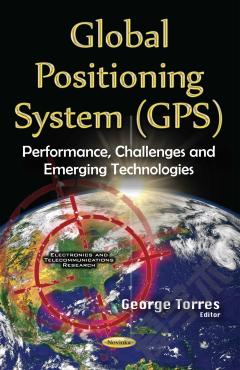Global Positioning —— Technologies and Performance
----- 地理定位:技术与性能
Foreword. Acknowledgements. Preface. Chapter 1. A brief history of navigation and positioning. 1.1 The first age of navigation. 1.2 The age of the great navigators. 1.3 Cartography, lighthouses and astronomical positioning. 1.4 The radio age. 1.5 The first terrestrial positioning systems. 1.6 The era of artificial satellites. 1.7 Real-time satellite navigation constellations today. 1.8 Exercises. Bibliography. Chapter 2. A brief explanation of the early techniques of positioning. 2.1 Discovering the world. 2.2 The first age of navigation and the longitude problem. 2.3 The first optical based calculation techniques. 2.4 The first terrestrial radio based systems. 2.5 The first navigation satellite systems: TRANSIT and PARUS/TSIKADA. 2.6 The second generation of navigation satellite systems: GPS, GLONASS and Galileo. 2.7 The forthcoming third generation of navigation satellite systems: QZSS and COMPASS. 2.8 Representing the world. 2.9 Exercises. Bibliography Chapter 3. Development, deployment and current status of satellite based navigation systems. 3.1 Strategic, economical and political aspects. 3.2 The global positioning satellite systems: GPS, GLONASS and Galileo. 3.2.1 The Global Positioning System : GPS. 3.2.2 The GLONASS. 3.2.3 Galileo. 3.3 The GNSS1: EGNOS, WAAS and MSAS. 3.4 The other satellite based systems. 3.5 Differential satellite based commercial services. 3.6 Exercises. Bibliography. Chapter 4. Non-GNSS positioning systems and techniques for outdoors. 4.1 Introduction (large area without contact or wireless systems). 4.2 The optical systems. 4.3 The terrestrial radio systems. 4.4 The satellite radio systems. 4.5 Non-radio based systems. 4.6 Exercises. Bibliography. Chapter 5. GNSS system descriptions. 5.1 System description. 5.2 Summary and comparison of the three systems. 5.3 Basics of GNSS positioning parameters. 5.4 Introduction to error sources. 5.5 Concepts of differential approaches. 5.6 SBAS system description (WAAS and EGNOS). 5.7 Exercises. Bibliography. Chapter 6. GNSS navigation signals: description and details. 6.1 Navigation signal structures and modulations for GPS, GLONASS and Galileo. 6.2 Some explanations of the concepts and details of the codes. 6.3 Mathematical formulation of the signals. 6.4 Summary and comparison of the 3 systems. 6.5 Developments. 6.6 Error sources. 6.7 Time reference systems. 6.8 Exercises. Bibliography. Chapter 7. Acquisition and tracking of GNSS signals. 7.1 Transmission part. 7.2 Receiver architectures. 7.3 Measurement techniques. 7.4 Exercises. Bibliography. Chapter 8. Techniques for calculating positions. 8.1 Calculating the PVT solution. 8.2 Satellite's position computations. 8.3 Quantified estimation of errors. 8.4 Impact of pseudo range errors on the computed positioning. 8.5 Impact of geometrical distribution of satellites and receiver (notion of DOP). 8.6 Benefits of augmentation systems. 8.7 Discussion on interoperability and integrity. 8.8 Effect of multipath on the navigation solution. 8.9 Exercises. Bibliography. Chapter 9. Indoor positioning problem and main techniques (Non-GNSS). 9.1 General introduction to indoor positioning. 9.2 A brief review of possible techniques. 9.3 Network of sensors. 9.4 Local area telecommunication systems. 9.5 Wide-area telecommunication systems. 9.6 Inertial systems. 9.7 Recap tables and global comparisons. 9.8 Exercises. Bibliography. Chapter 10. GNSS-based indoor positioning and a summary of indoor techniques. 10.1 HS-GNSS. 10.2 A-GNSS. 10.3 Hybridization. 10.4 Pseudolites. 10.5 Repeaters. 10.6 Recap tables and comparisons. 10.7 Possible evolutions with availability of the future signals. 10.8 Exercises. Bibliography. Chapter 11. Applications of modern geographical positioning systems. 11.1 Introduction. 11.2 A chronological review of the past evolution of applications. 11.3 Individual applications. 11.4 Scientific applications. 11.5 Applications for public regulatory forces. 11.6 Systems under development. 11.7 Classifications of applications. 11.8 Privacy issues. 11.9 Current receivers and systems. 11.10 Conclusion and discussion. 11.11 Exercises. Bibliography. Chapter 12. The forthcoming revolution. 12.1 Time and space. 12.2 Development of current applications. 12.3 The possible revolution of everybody's daily life. 12.4 Possible technical positioning approaches and methods for the future. 12.5 Conclusion. 12.6 Exercises. Bibliography. Index.
{{comment.content}}








 京公网安备 11010802027623号
京公网安备 11010802027623号